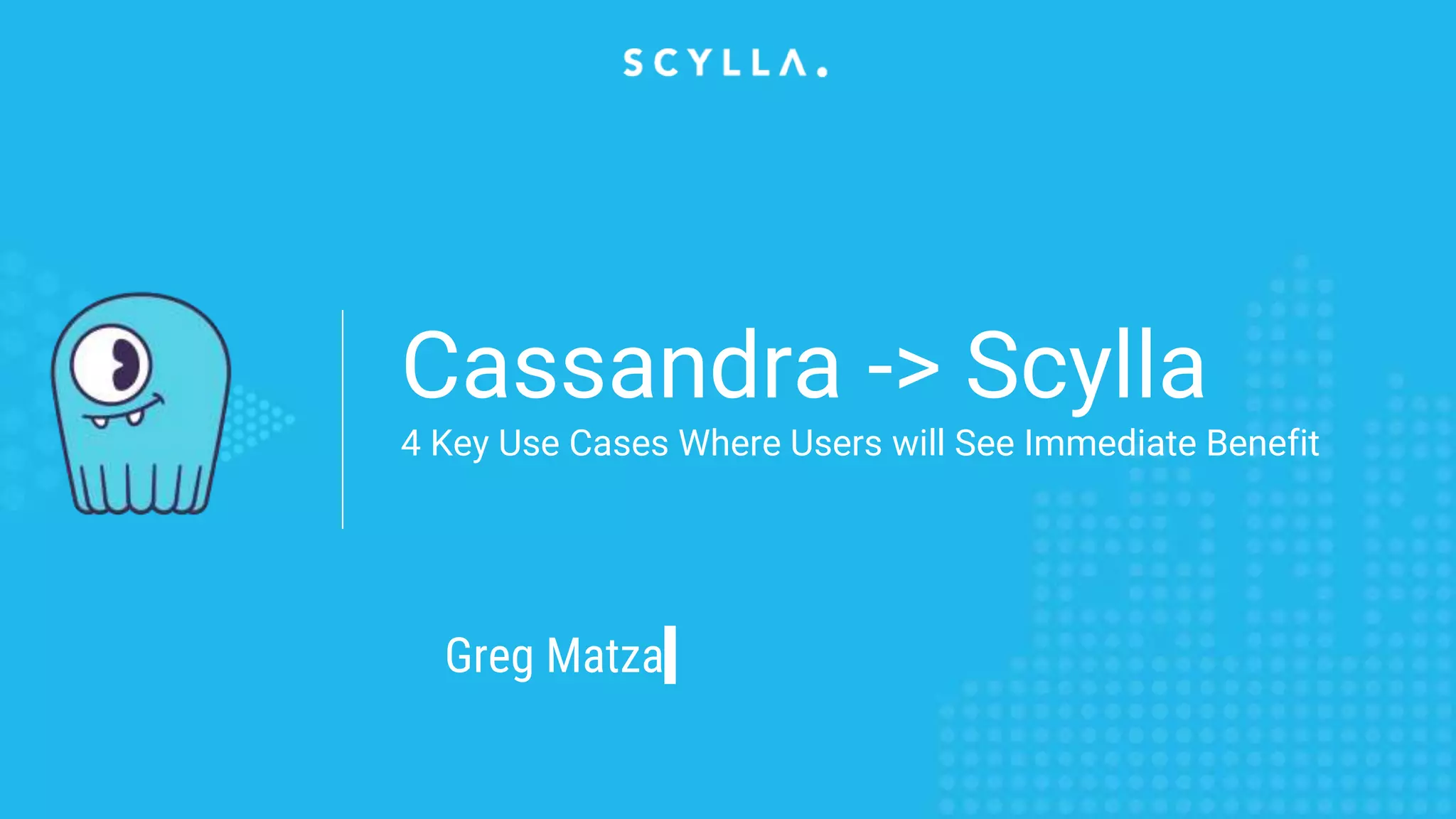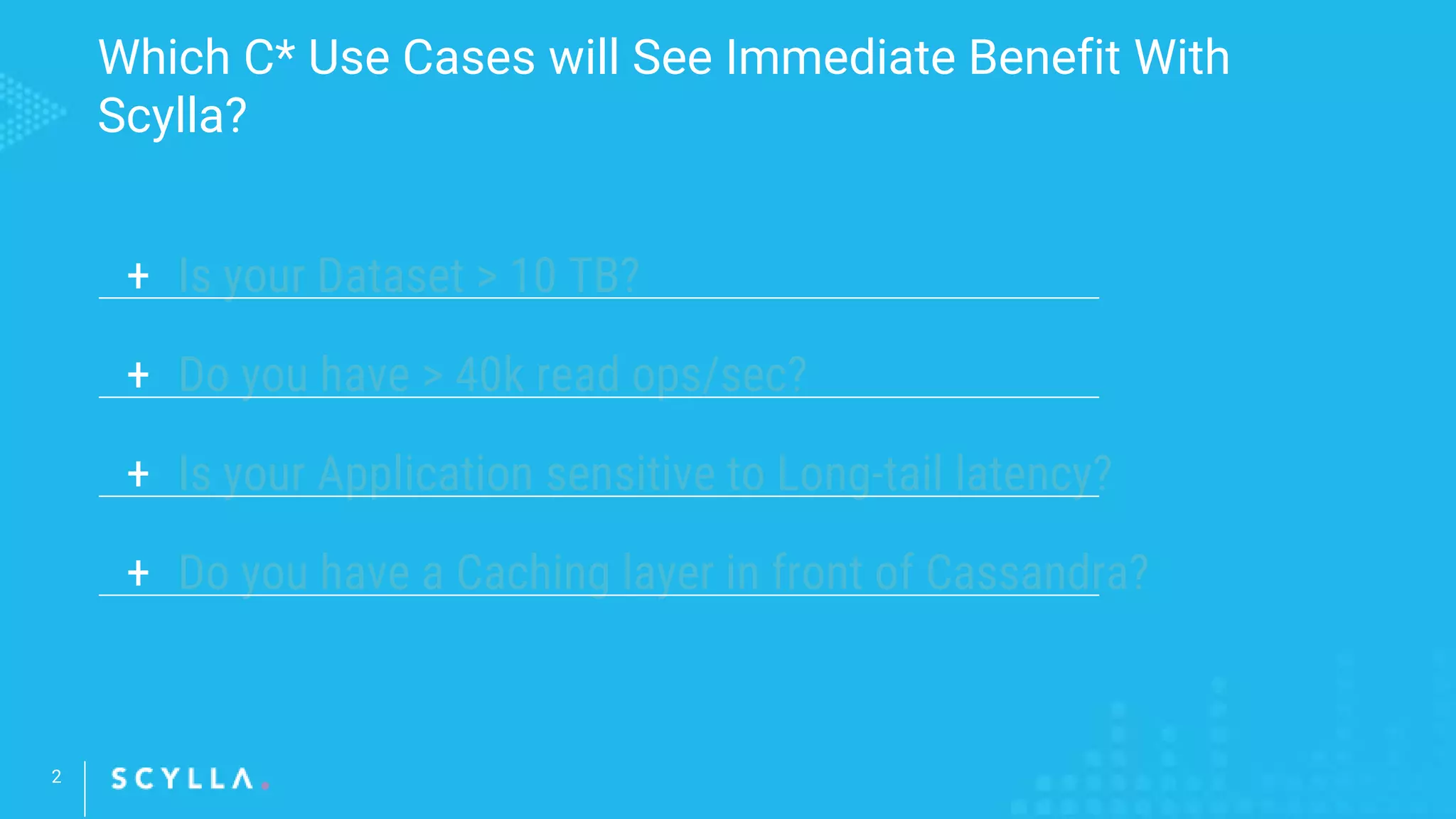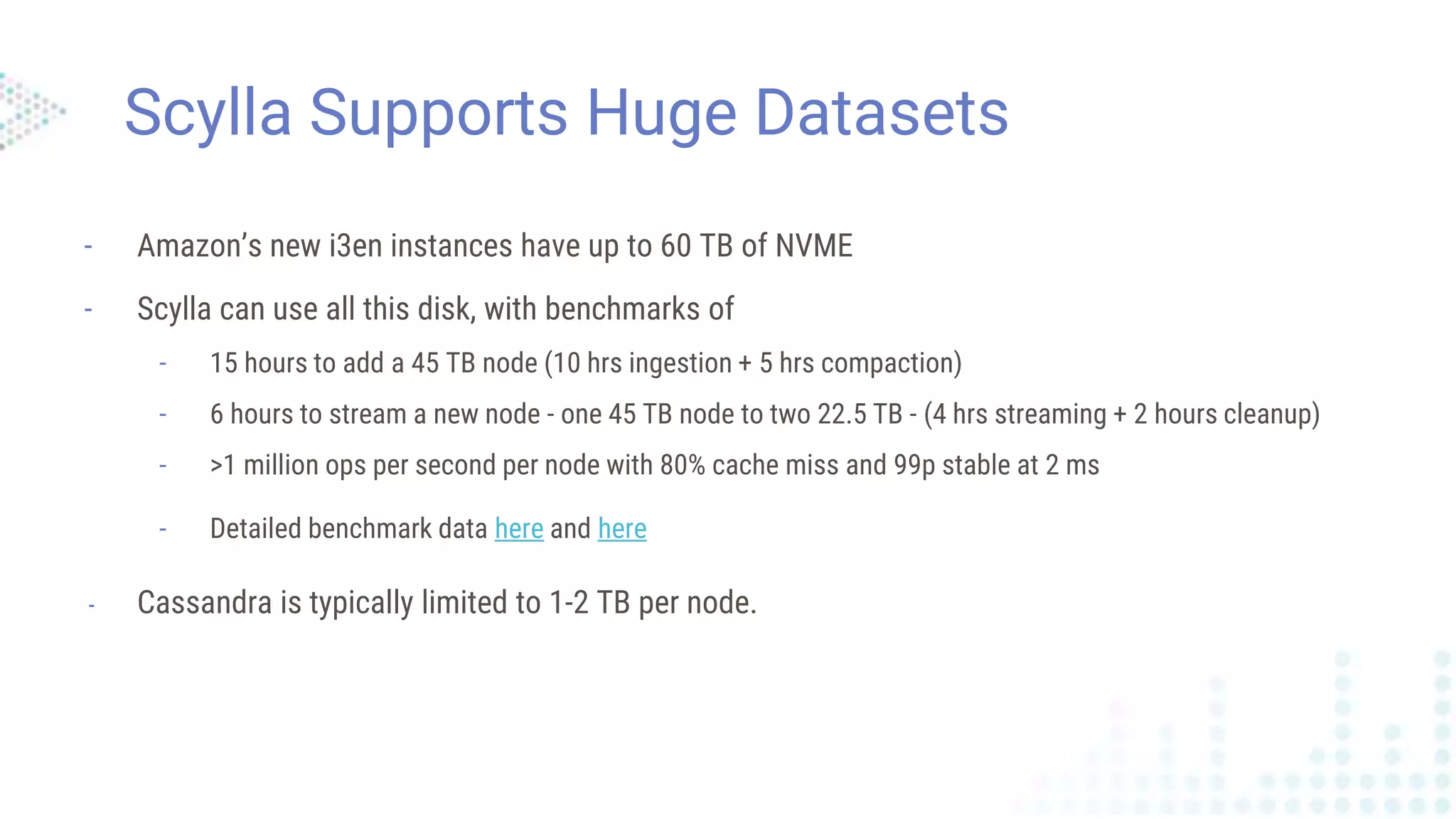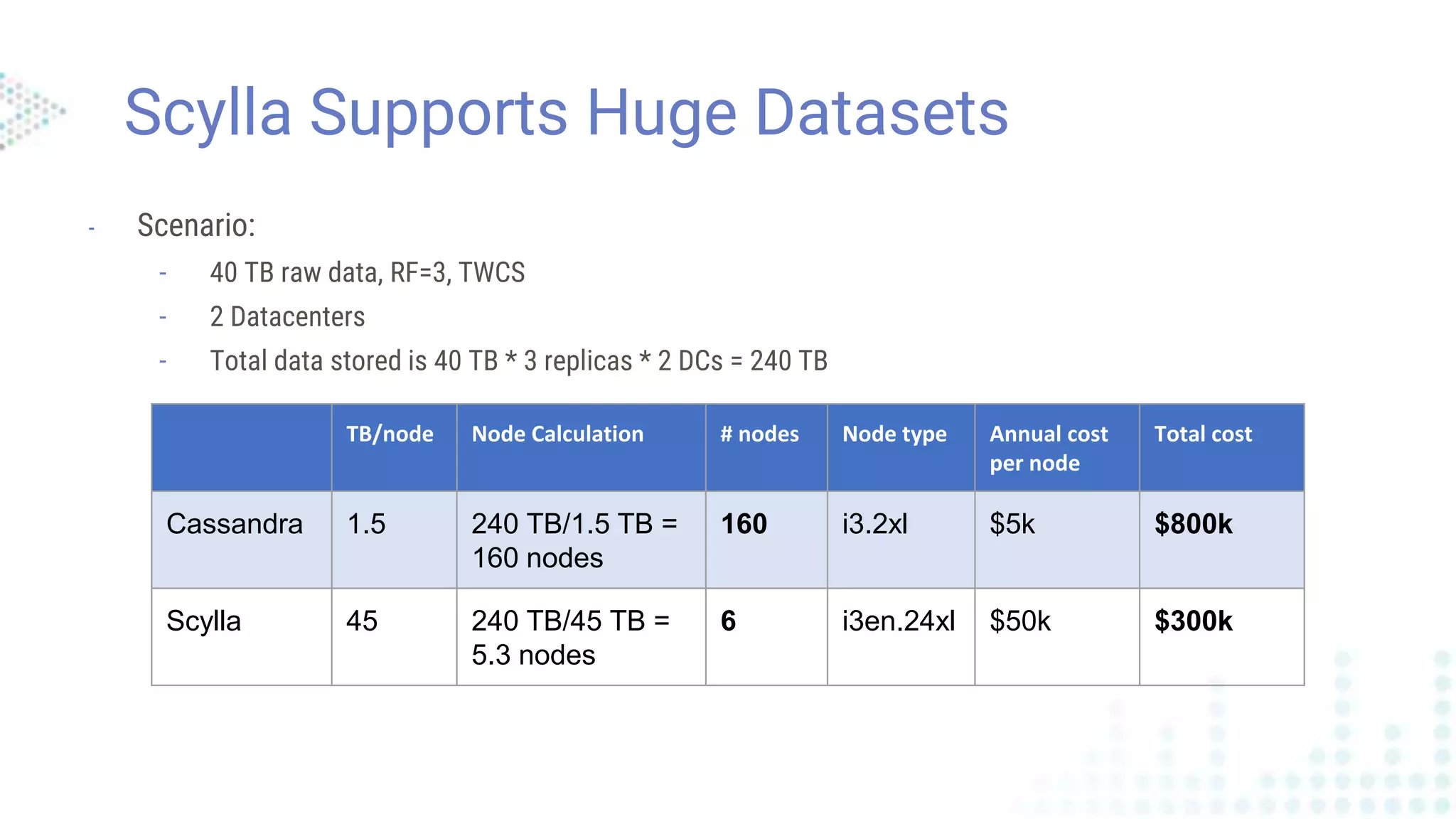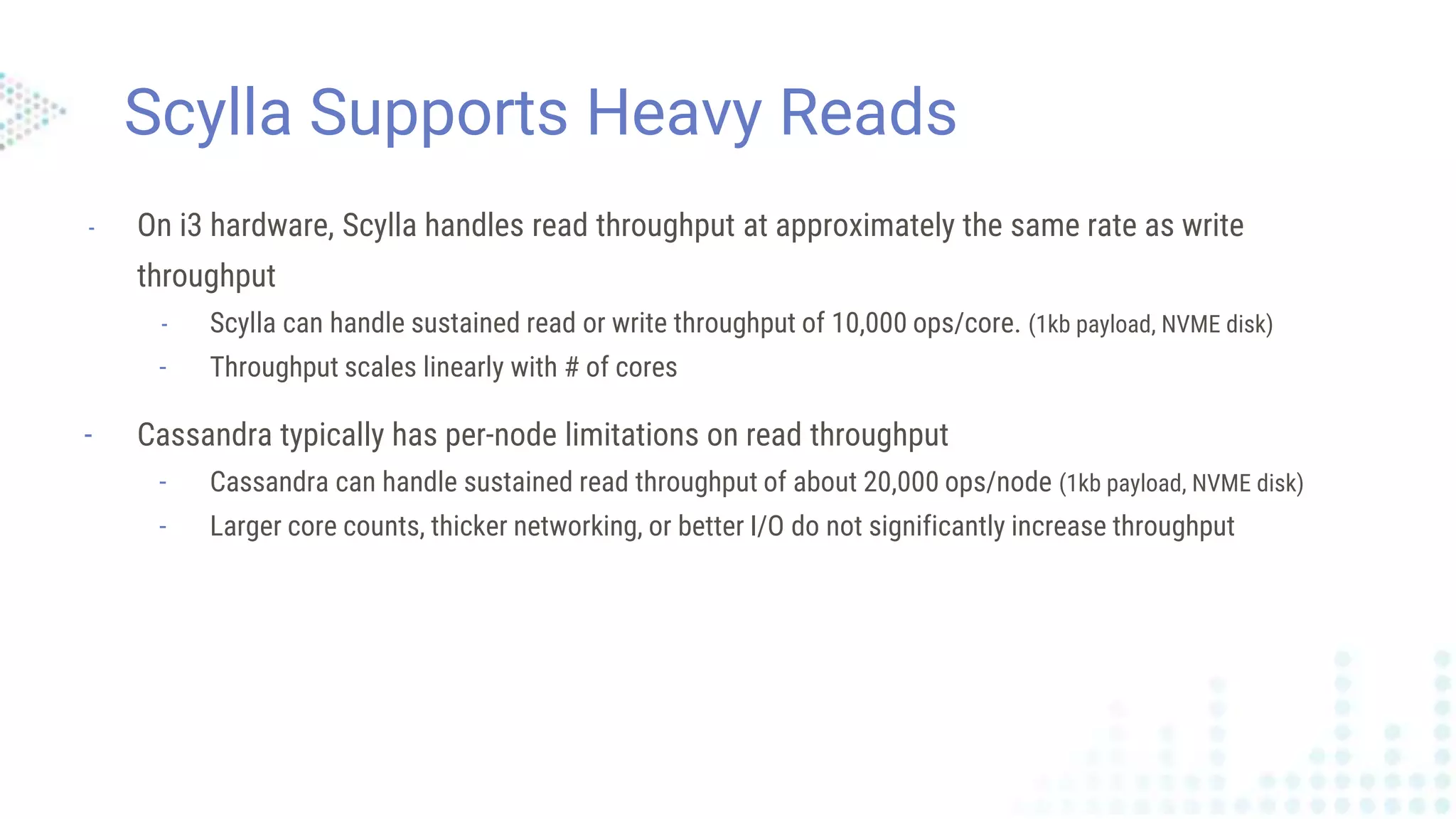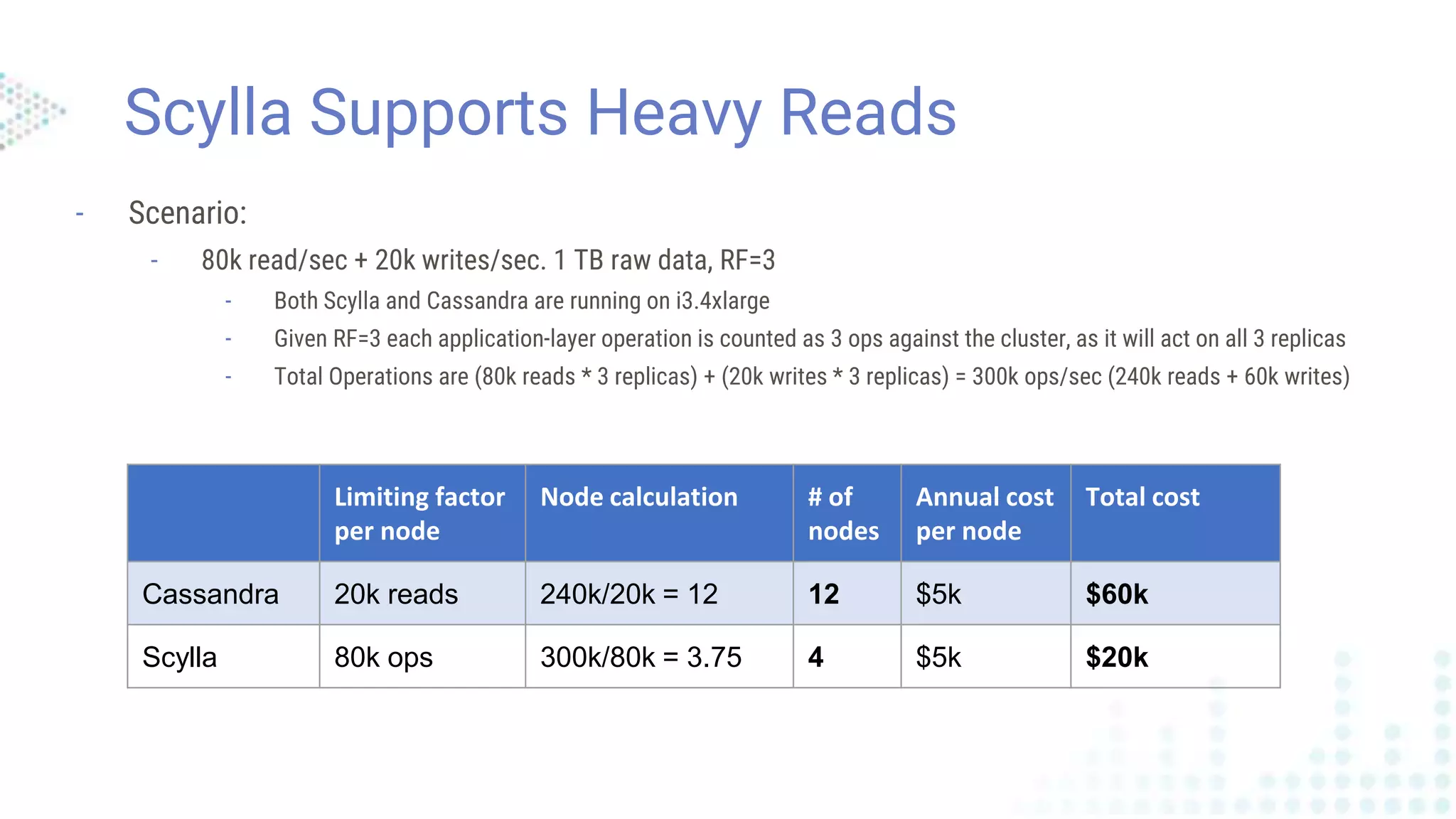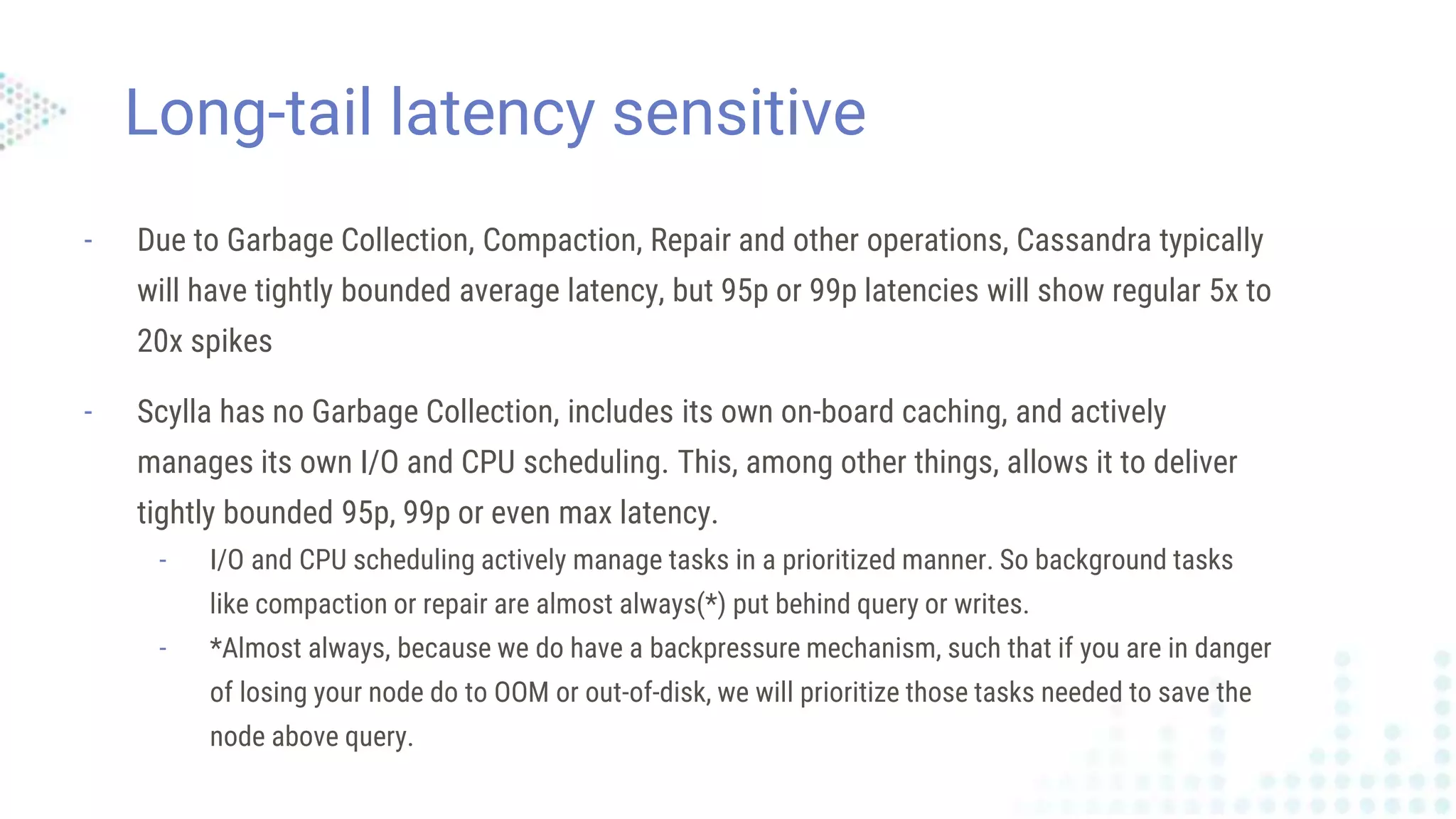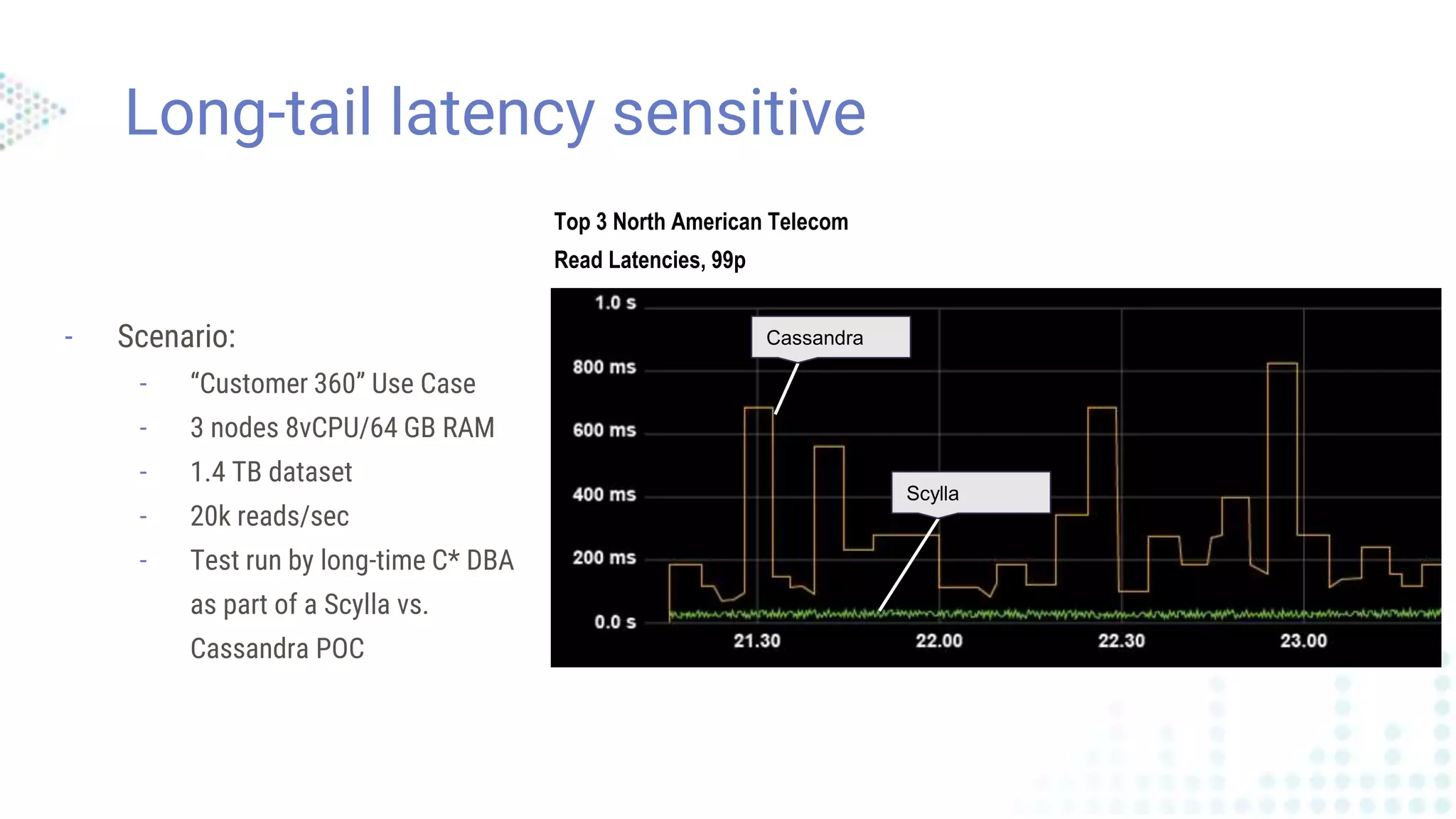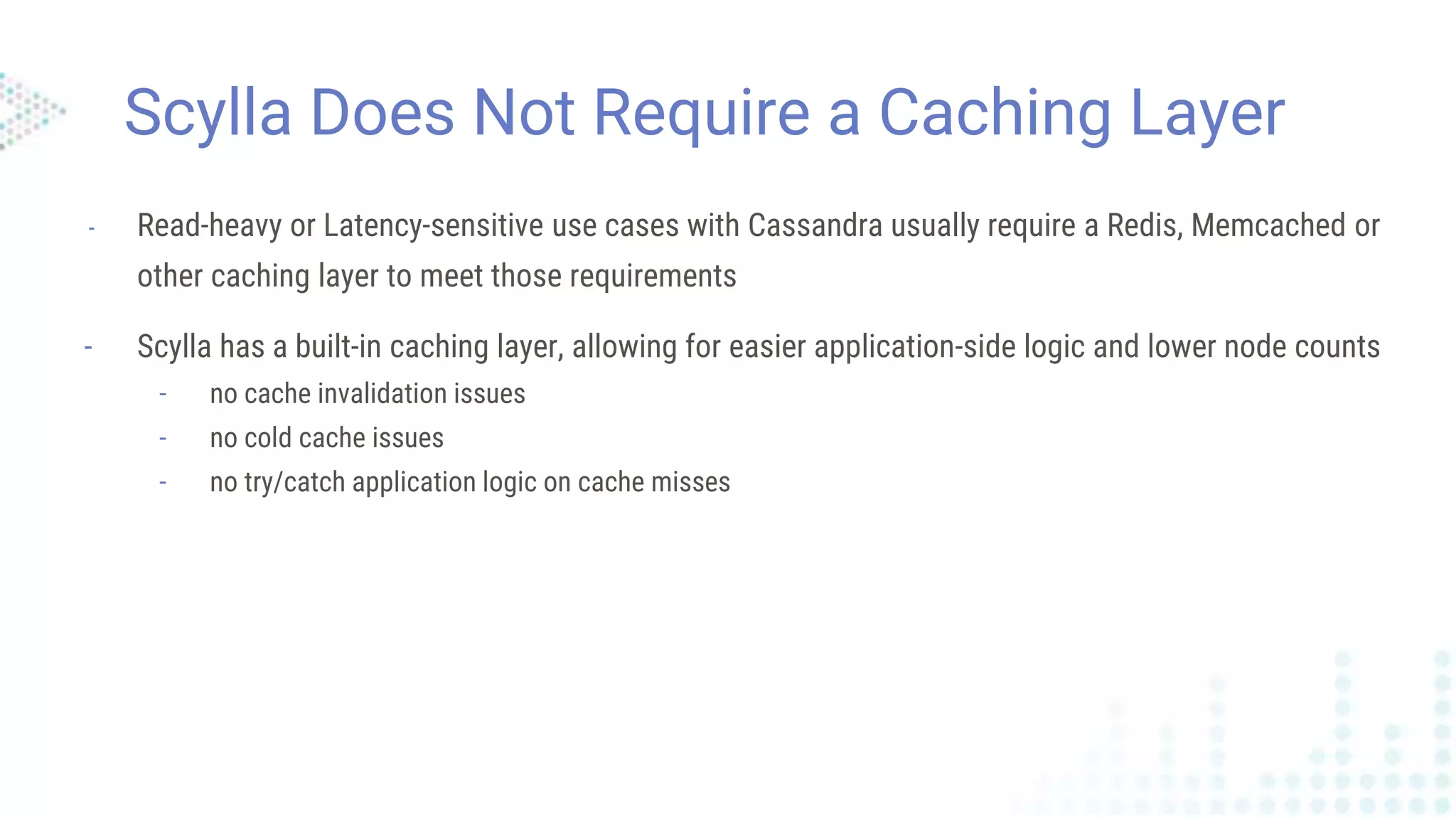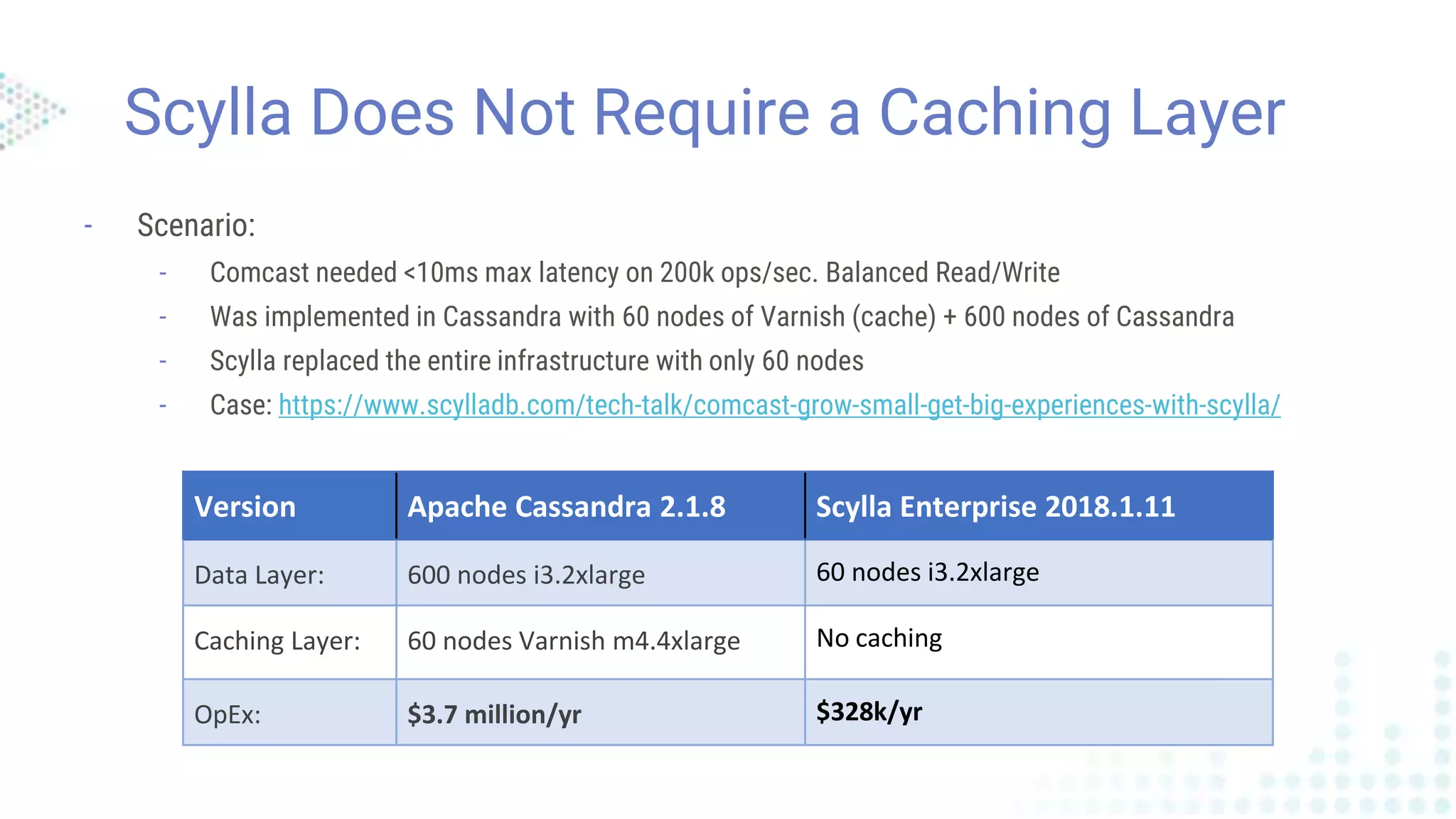The document outlines key use cases where Scylla offers immediate benefits over Cassandra, particularly for large datasets, heavy read operations, and applications sensitive to long-tail latency. It highlights substantial cost savings and performance improvements when migrating from Cassandra to Scylla, including a reduction in required nodes and annual operational expenses. Scylla's built-in caching layer alleviates the need for external caching solutions, further simplifying infrastructure requirements.
